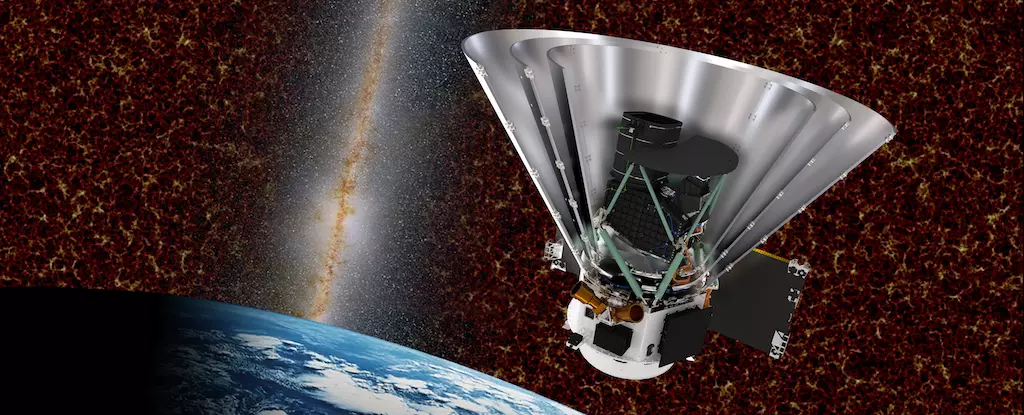In a groundbreaking effort to deepen our understanding of the universe, NASA is preparing to launch the SPHEREx mission, a revolutionary astronomical project aimed at generating the most intricate and colorful 3D map of the entire sky ever created. Set for a launch on February 28, the SPHEREx spacecraft is not only an ambitious scientific endeavor but also a stepping stone towards answering some of humanity’s most profound questions about our existence and the cosmos at large.
At the heart of SPHEREx lies a mission to analyze every pixel it captures in order to provide insights into what exists in the universe, their compositions, and the distances that separate us from these celestial bodies. The project will embark on a comprehensive two-year scan, diving into the mysteries of the cosmos by capturing every point in an extraordinary infrared rainbow made up of 102 distinct colors. According to Olivier Doré, an astrophysicist at NASA’s Jet Propulsion Laboratory and the project scientist for SPHEREx, the craft will look at a vast spectrum of celestial phenomena, including everything from our solar system’s comets to distant galaxies.
The SPHEREx acronym, which stands for Spectro-Photometer for the History of the Universe, Epoch of Reionization and Ices Explorer, encapsulates the mission’s tripartite objectives. The first goal is to investigate the universe’s appearance in the aftermath of the Big Bang, a mission that probes the very origins of our existence. Next, researchers will catalog the total light emitted from all galaxies, providing an essential metric for understanding cosmic evolution. Finally, SPHEREx will search for water—a vital ingredient for life—within the Milky Way. This triple-layered ambition underscores the comprehensive nature of the analysis that SPHEREx will undertake.
The SPHEREx mission utilizes the spectrum of light as a universal code to decipher various aspects of the universe. By observing the extent to which light wavelengths are stretched or compressed, scientists can glean essential information regarding the distance of celestial objects and their movement relative to our perspective on Earth. This technique will ultimately enable the creation of an extensive and detailed three-dimensional cosmic chart, conceptualizing the relative positions of an estimated 450 million galaxies.
One of the intriguing possibilities put forth by the SPHEREx mission is its potential to test theories surrounding cosmic inflation. This brief yet monumental surge in the universe’s scale occurred in the immediate aftermath of the Big Bang, leading to the formation and distribution of galaxies we observe today. If the data collected by SPHEREx reveals a homogeneous density of galaxies across the universe, it could lend credence to simpler inflationary models. Conversely, any significant discrepancies might suggest the influence of uncharted fields and particles in cosmic evolution.
Moreover, SPHEREx’s comprehensive observational data will facilitate the estimation of all light ever emitted by galaxies throughout the universe’s timeline. By interpreting how this light has traveled—its origins, timing, and total output—scientists could piece together a narrative of cosmic history, mapping how the universe has evolved. Such insights could be invaluable for understanding when and how galaxies formed and thrived in the vast expanse of space.
On a more immediate note, SPHEREx’s findings could shed light on the prospects of extraterrestrial life. By investigating the spectral signatures of life-essential compounds like water ice within star-forming molecular clouds, the mission could provide crucial data about the environments where new planets—and possibly life—may emerge. Each element or compound leaves a unique spectral fingerprint, allowing scientists to decipher the composition of these clouds, enhancing the understanding of where potential biosignatures might exist.
As the data from SPHEREx hits the scientific community, it can synergize beautifully with data collected from other observatories, such as the James Webb Space Telescope (JWST). With SPHEREx’s broader observational capacity, JWST can focus on more specific areas of interest identified by SPHEREx, enabling in-depth analysis using its high spectral resolution. This cooperative interplay between observatories promises to result in a richer tapestry of cosmological data, ushering in an era of extensive and collaborative astronomical research.
NASA’s SPHEREx mission promises to redefine our understanding of the cosmos, providing a multidimensional perspective on the universe’s vastness and complexity. As we stand on the brink of this journey, the insights gleaned from SPHEREx could resonate through space science, yielding knowledge that might very well shape future explorations and philosophical inquiries about our place in the universe. The anticipation surrounding its launch serves as a reminder that in the quest for knowledge, the journey itself is just as significant as the destination.

